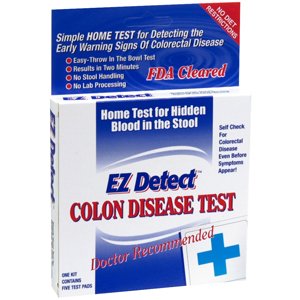 Colonic Hydrotherapy, also known as Colonic Irrigation, is a natural way to aid health and feel clean and balanced. Colon therapy has been used for centuries by European, Middle Eastern, and Far Eastern people for personal purification, health, and religious pursuits. Today, it is being used in alternative and naturopathic therapies for cancer treatment, candida and constipation, irritable bowel syndrome, and to ease labor and childbirth.
Colonic Hydrotherapy, also known as Colonic Irrigation, is a natural way to aid health and feel clean and balanced. Colon therapy has been used for centuries by European, Middle Eastern, and Far Eastern people for personal purification, health, and religious pursuits. Today, it is being used in alternative and naturopathic therapies for cancer treatment, candida and constipation, irritable bowel syndrome, and to ease labor and childbirth.
Benefits of Colon Hydrotherapy for Cancer
Colonic Hydrotherapy is especially useful in treating cancer patients. Colonics improve circulatory functions, stimulate the immune system, remove toxic waste, stimulate appetite, eliminate headaches, and boost energy.
When we eat a nutritionally deficient diet, the unused waste stagnates in the colon and the body absorbs these toxins. The organs in the body responsible for purification, such as the liver, kidneys, lungs, and skin, work overtime trying to purge the waste. This can result in a variety of illnesses.
Removing carcinogenic toxins from the body and boosting the immune system are paramount during illness, especially cancer. With cancer, large tumors can break and cause necrotic areas, formed of dead tissue. Since the body expels these toxic byproducts through the colon, it’s vital to keep the colon flushed out with a cleansing colonic irrigation.
If a patient is weakened from the disease, frequent colonics help relieve the colon’s toxic burden during the patient’s healing process. But remember, colonic hydrotherapy is not a cure, nor should it be the only treatment for cancer. With a disease as serious as cancer, concurrent care under a physician is advisable.
Why Use Colonics for Cancer?
The American diet—full of processed foods, saturated fats, salt, bleached bread, additives, and artificial colors—leaves the colon clogged and stressed. Undigested food in the colon can ferment and putrefy, encouraging bacteria and toxins. Add to that a habitual lack of exercise and not drinking enough water and the result is constipation or diarrhea.
Colon Hydrotherapy releases congestion in the bowel, encourages beneficial intestinal flora, and detoxifies the body to improve overall health. After a colonic, people report feeling lighter in body and spirit, clean, clear headed, healthy, and even euphoric. Other benefits of colonics include less headaches, better mental clarity, better weight management, and relief from abdominal cramps, rheumatoid arthritis, and allergies.
The colonic procedure involves insertion of a disposable speculum connected to a hose into the rectum and the release of a solution, usually made of warm water or water and baking soda, to flush out the intestinal tract and upper bowel. The colon is flushed repeatedly to gently loosen fecal matter and flush away toxins.
Colonics for Cancer Prevention
Colonic Hydrotherapy can also be used as a preventative measure for cancers of the colon, liver, and digestive system, as well as for general health. When we normally move our bowels, we do not entirely empty the colon and material is left behind. A colonic flushes away what is left over, cleaning the body of waste and toxins that can build up and promote the growth of cancer cells.
Along with a healthy diet and exercise program, regular colonics are part of a proactive plan to ward off disease and promote well-being. A generally healthy person can undergo a colonic once every few months to maintain good health.
Home Colonic Kits
Many naturopathic companies sell home colonic kits for patients who prefer privacy but also want the benefits of a colonic. The kits typically use a sodium phosphate solution and come with pre-lubricated nozzles for gentle insertion. The bags and the tubing are disposable, or, if properly cleaned and used by a single person, can be used for several sessions. While home colonics are effective and affordable, receiving a professional colon hydrotherapy session will provide the best results. Most professional colon hydrotherapy equipment includes pressure gauges, closed water flow systems, and back flow prevention systems to provide a more comfortable experience.
Choosing Colonics Over Enemas
To achieve the most benefit, choose Colon Hydrotherapy over a simple enema. An enema is only able to cleanse the lower bowel, while a Colonic cleans the entire bowel and gastrointestinal tract. This treatment has been shown to improve the health of liver cancer patients specifically.
Colonics and Fasting
In some colon hydrotherapy treatments, before a Colonic is performed the patient fasts with no food and only liquids, such as water, fruit juice, and vegetable broth. The fasting and the Colonic are part of an overall regimen to cleanse the body and boost the immune system. Fasting assists the body in detoxifying more effectively.
Risks to Colonics
Except in the State of Florida, practitioners of Colon Hydrotherapy are not required to have a license to practice. While the FDA requires the legal sale of Colonic Irrigation systems only for medically necessary colon cleansing (such as before an endoscopic exam), it has not approved any colon cleansing system for use on patients who are well.
Any kind of medical treatment carries some risk. In rare cases, colonics performed with unsanitary materials can introduce bacteria and disease. Colonics, which soften the stool, can result in seepage from the anus, causing soiled clothes and embarrassment. Habitual overuse of colonics can cause irritation in the rectum, bleeding, infections, tears, electrolyte imbalance, and even constipation. Always seek an experienced Colon Hydrotherapist for your treatment.
Labels: anti-cancer, cancer, cancer prevention, colon hydrotherapy, colon irrigation, colonics, enemas, fasting, health






















